“However, I believe it will do no harm to accept your invitation. It may prove an interesting experience.” —William McKinley
With those words the 25th president of the United States became the first to ride in an automobile while in office. It was the late 1800s and McKinley was accepting an invitation from O.F. Stanley, who had invented a “steam-propelled horseless carriage.”
History tells us McKinley did not enjoy his ride, which shouldn’t come as much of a surprise. After all, open-air vehicles driving on rough roads were not overly conducive to a luxurious experience. Fortunately for the commanders in chief to follow, the presidential driving experience has come a long way.
There are few, if any, vehicles that have earned as much reverence and intrigue as the presidential state car, and for good reason. Each one is both innately historic and one-of-a-kind. You do not need to be a historian or car aficionado to appreciate them.
These cars tell stories – about the presidents who rode in them and the country they oversaw.
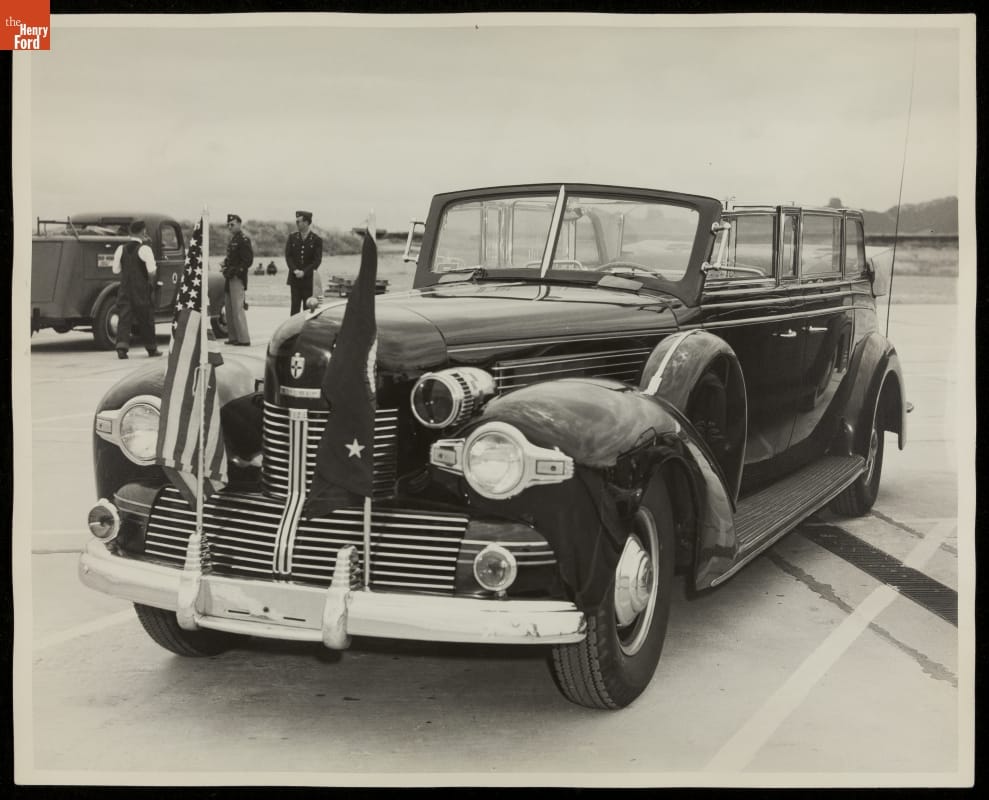
Franklin D. Roosevelt’s Lincoln Model K
During the early 1900s, U.S. presidents were driven around in standard production cars available to the general public, or at least the segment of the population that could afford such a vehicle back then. It wasn’t until Franklin D. Roosevelt’s presidency that the Secret Service began using specially built official state cars.
FDR’s tenure as president initiated the thought of customizing presidential vehicles for improved security and convenience for two specific reasons. In 1933, Roosevelt survived an assassination attempt as he was giving a speech from the back seat of his open touring car. He also needed a vehicle his wheelchair could get in and out of easily. And so, in 1939, the Lincoln K state car was introduced. Dubbed the “Sunshine Special” due to the fact FDR loved to ride with the roof down, the car came outfitted with a two-way radio as well as handles and extra-wide running boards that Secret Service agents could use to ride outside the vehicle.
After the Japanese attacked Pearl Harbor in 1941, security concerns ramped up even more. As such, the Sunshine Special went back to the factory where armored doors and bullet-resistant tires and gas tank were added. While that was happening, FDR used an armored limo that, according to the Secret Service, originally belonged to Al Capone. The Department of the Treasury had seized the vehicle years prior on a tax evasion charge.
Did you know? Theodore Roosevelt was the first president to ride in an automobile during an official procession, doing so in Connecticut in 1902.
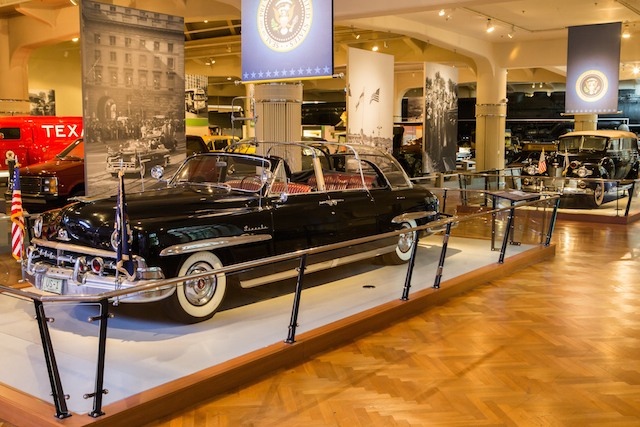
The Lincoln Bubble-Top
President Harry Truman inherited the Sunshine Special, but by 1950 he was allowed to choose his own car. Rumor has it that Truman held a grudge against General Motors after the manufacturer refused to give him access to their cars during the 1948 presidential election. Therefore, Truman stuck with Lincoln and opted for the marque’s Cosmopolitan model.
Truman used the car for the remaining two years of his presidency. However, the vehicle is more closely associated with his successor, Dwight Eisenhower. It was the 34th president that had the car outfitted with its famous bubble-top roof so that spectators could see him when the top was up.
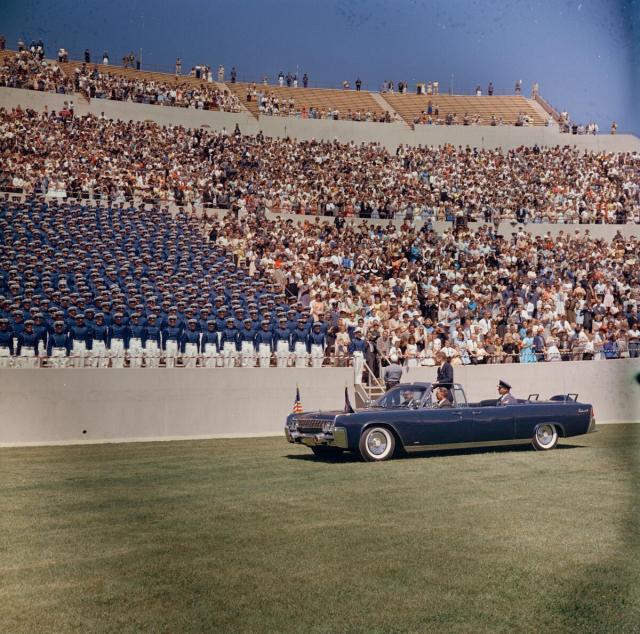
John F. Kennedy’s Lincoln
The most famous presidential state car played a role in one of the darkest moments in U.S. history – John F. Kennedy was riding in a 1961 Lincoln Continental when he was assassinated in 1963.
The car’s bold styling, featuring a low-slung body and suicide doors, personified the young, forward-thinking president. It was customized with a phone system and a mechanism that elevated the passenger seat to allow spectators a better view of the president.
But as aesthetically pleasing as the Lincoln was, it did not have any serious protective features. While the vehicle did come equipped with a clear plastic bubble-top, it was not bulletproof.
Lyndon B. Johnson’s Updated Continental
After President Kennedy’s assassination, it was clear the presidential limo needed a substantial update. The problem was, there was no time no wait for a new car. Lyndon B. Johnson needed a vehicle right away.
Instead, the ’61 Continental was stripped down and built back up stronger and more formidable than ever. Titanium was added to the vehicle’s body, the windows were bullet resistant and a permanent, bulletproof roof was installed. The car remained in use through LBJ’s presidency and into Richard Nixon’s term in office. It now resides in the Henry Ford Museum, along with several other presidential state cars. (Lincoln is a division of Ford Motor Company.)
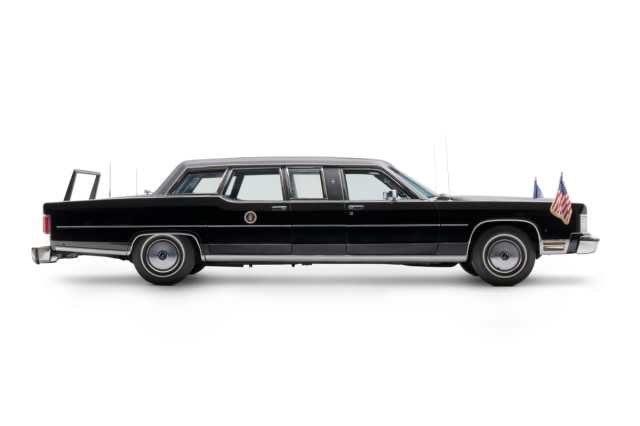
Ronald Reagan’s Cadillac
Presidents Nixon, Gerald Ford, Jimmy Carter and Ronald Reagan would all use variations of the Lincoln Continental. The presidential state car didn’t see a model change until Reagan switched to a Cadillac Fleetwood limousine in 1983. (Aside from George H.W. Bush’s Lincoln Town Car, Cadillacs have been used ever since.)
Modifications of the car included a raised roof that made it easier for the president to see the crowds. The new vehicle’s introduction also ushered in new safety protocols. Beginning with the Fleetwood, presidential cars were only used for official state business and, because of security concerns, this would be the last such vehicle to be preserved.
Did you know? The Lincoln Continental was involved in three presidential assassinations or assassination attempts. In addition to JFK, the vehicle was used to rush Gerald Ford to safety during a 1975 attempt in San Francisco and was the car Ronald Reagan was getting into when he was shot in 1981.
High-Tech Limos: Modern Presidential State Cars
Security measures escalated at a considerable pace in the 1990s. President Bill Clinton’s Fleetwood did not have running boards or a sunroof for safety reasons. It did, however, have telephones, internet access and satellite communications, all of which were considered extremely high-tech to have in a car in 1993.
President George W. Bush’s Cadillac DeVille marked an important milestone in presidential car history: It was the first such vehicle not to be based on a commercial model. Instead, it was built to the specifications of the Secret Service. In fact, by 2001, Cadillac wasn’t even producing cars that could be converted into limousines. It’s speculated that the “DeVille” was actually built on the chassis of one of General Motors’ full-size SUVs. Either way, the car was equipped with an infrared night vision system, 5-inch-thick armored doors and a self-contained passenger compartment with its own secure air supply.
Fast forward to President Obama’s transport. The 44th commander in chief’s Cadillac lived up to its moniker of “The Beast,” weighing 15,000 pounds. The blast-resistant limo had Kevlar-reinforced tires and 8-inch-thick rear doors as heavy as the main-cabin doors of a Boeing 757. The vehicle also carried tanks of oxygen and bags of type AB negative blood (Obama’s blood type).
Did you know? When the president travels, all the vehicles in the presidential motorcade are transported via U.S. Air Force planes.
Get more automotive history.
Featured image: John F. Kennedy’s presidential limousine. (From the Collections of The Henry Ford)
10 Thoughts on “The History of the Presidential State Car”
Leave A Comment
Comments are subject to moderation and may or may not be published at the editor’s discretion. Only comments that are relevant to the article and add value to the Your AAA community will be considered. Comments may be edited for clarity and length.






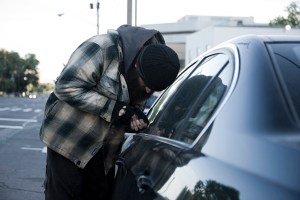
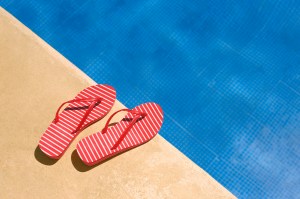








What you didn’t know is the Presidential Limos from the late 60s on were designed right here in Massachusetts at the now closed US Army Watertown Arsenal. The Project Director was an NU Graduate: Gordon Parsons (now deceased) of Melrose, Mass.
President Taft had the first official Presidential Car, a Steam Car built by White, which is on display at Heritage Museum and Gardens in Sandwich MA.
PS: Just looked up President Harding’s car and found this in the White House history, though you probably saw it already:
https://www.whitehousehistory.org/galleries/motor-cars-comes-to-the-white-house-harding-administration
Lovely article. I remember my grandmother, Edna M. Smith, 60+ years ago, telling me about the long Pierce Arrow limousine – of a maroon color, I think – in which President and Mrs. Warren G. Harding returned home to Marion, Ohio for a 4th of July celebration in 1922, the town’s Centenary. I guess that was before the President’s protective detail had a significant hand in selection of the state automobile, but I do remember hearing there were Secret Service agents and policemen in attendance. By 1922, the nation, of course, had already lost three presidents to assassination – including, Ohio’s own President McKinley – and European leaders had been frequent targets during previous decades, most notoriously, Archduke Franz Joseph and his wife. Again, lovely article, and very apt for the day. Many thanks.
Great story, did President Trump use Obama’s vehicle too? If not what type if you can’t share the details I understand but it would be great to know the make and model.
What happened to President Trump’s vehicle? It was never mentioned in the article.
Fascinating history. Thks
Loved the history on presidential cars…can you show us what is current ?
Hi Ron, I’m glad you enjoyed the story. The Secret Service doesn’t disclose information about the presidential cars so it usually takes years for enough details to emerge about each president’s vehicle. That said, it appears President Biden’s limo is very similar to that of President Obama.